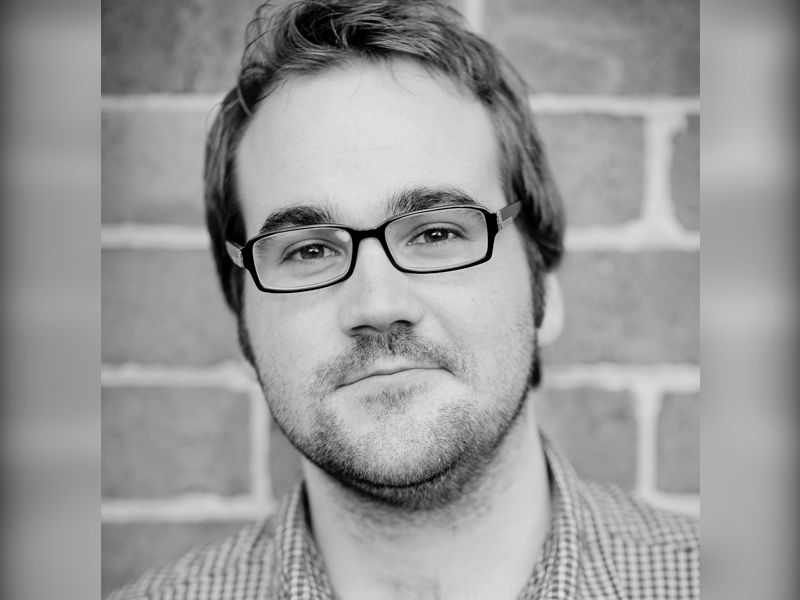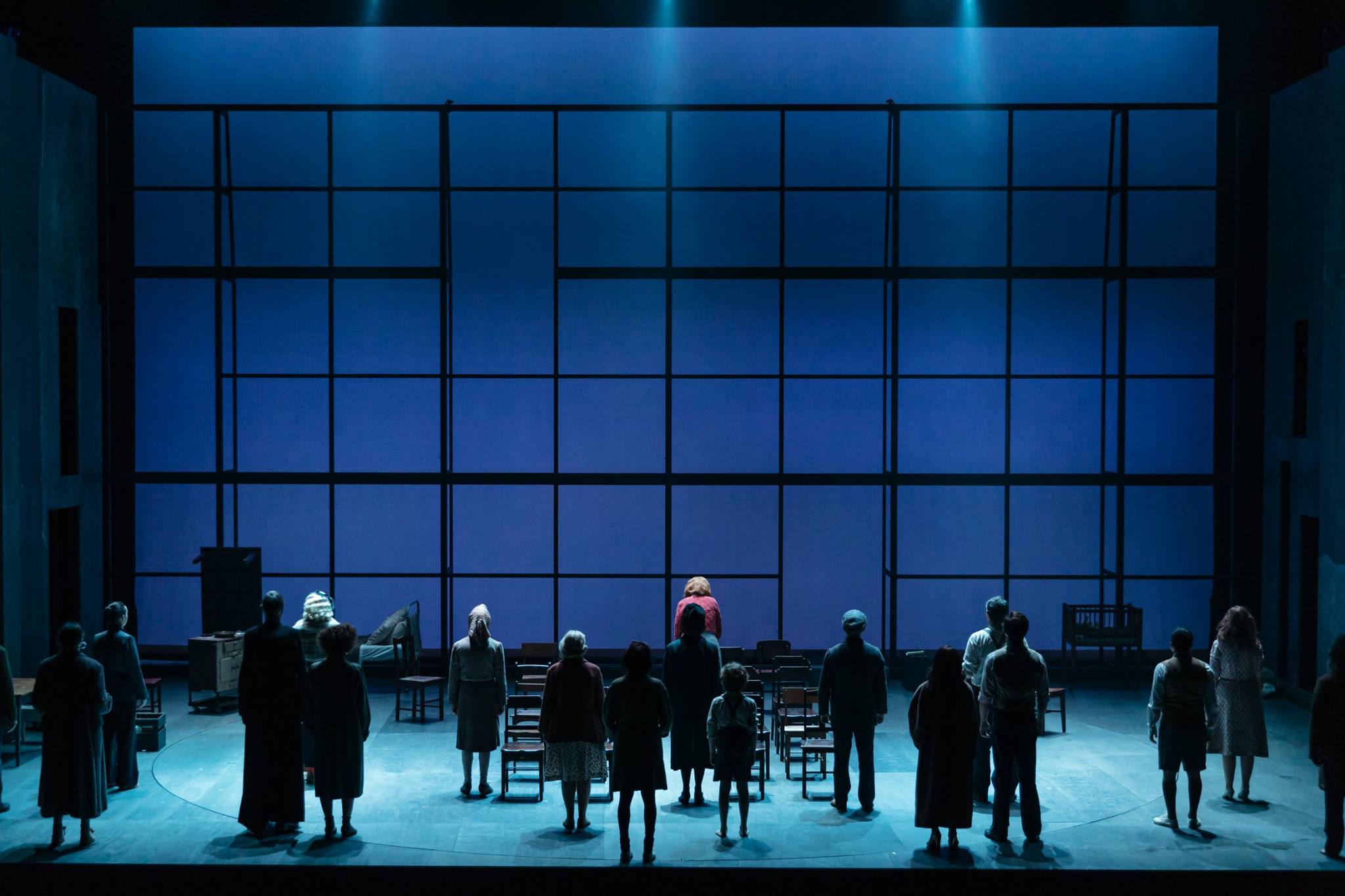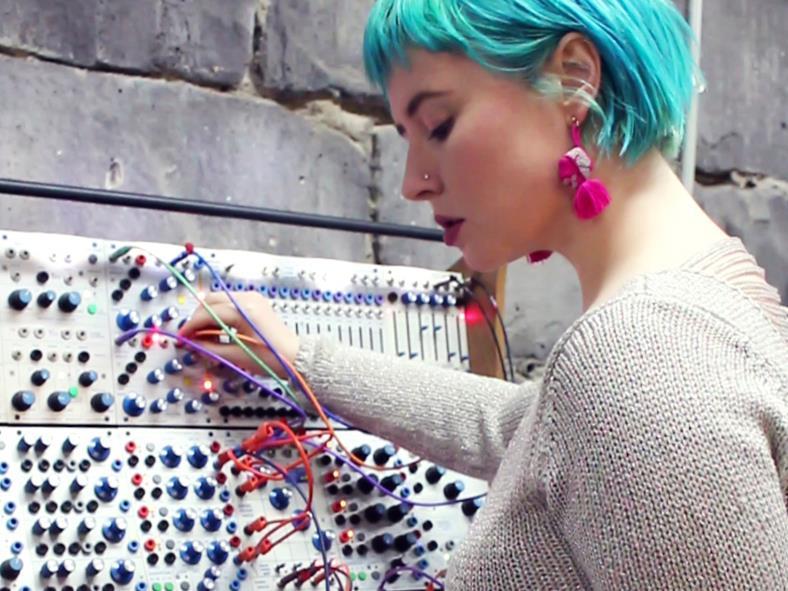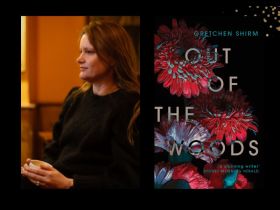Emah Fox works with the Buchla synth at Melbourne Electronic Sound Studio. Image: Supplied
‘Sound design is one of the most nebulous terms in the entertainment industry, as its meaning differs fairly significantly depending on the medium in which you are working,’ said Nate Edmondson, an award-winning sound designer who works on locally and internationally produced theatre productions.
‘At its broadest, however, the term “sound designer” describes the person who determines what, where, how, and why the audience experience the aural world of the production.’
In terms of sound design for theatre, Edmondson said responsibility ranges from designing the sound system, to creating and sourcing pre-recorded sound effects and sourcing, and editing any existing non-original music content.
For those unfamiliar with the way a sound designer works, he explained his workflow to ArtsHub.
‘I work through Logic Pro (a digital audio workstation) and all of my scoring and sound design in terms of content creation happens there,’ he said. ‘I have a collection of instrumental sample libraries that I play through via my controller keyboard, in tandem with live studio and home recordings, depending on the project.
‘For sound effects, I have a collection of effect libraries and personal recordings I draw on, along with effects sourced and purchased online show-by-show, as needed, and I’ll edit these in Logic before bringing them into QLab, along with the music stems.’

Nate Edmondson. Image: Supplied
Edmondson said it was his musical background which helped him get into the industry.
‘I have been a musician from a very young age, and that led me into the world of theatre sound design,’ he said. ‘Sound design has always been a complementary skillset to my work as a composer, and in the theatre industry the two roles are more often than not bundled together.’
Similarly, pop singer and writer/producer Emah Fox crafted a career in sound design through her musical sensibility.
‘The music I write has always been somewhat “cinematic” or atmospheric, and writing for film or theatre was definitely something I was always interested in though I didn’t know how people got hired to do it,’ Fox admitted.
Studying sound design as part of a BA lead Fox to work with choreographers and compose a score for This is What’s Happening which was nominated for a 2015 Green Room Award. She now works across a diverse range of projects designing sound for installation, plays, videos, dance and film in addition to working at Melbourne Electronic Sound Studio where she supervises sessions and teaches synthesiser workshops.
‘I work predominantly with theatre-makers but also visual artists, and I make my own multimedia work involving video, sculpture, light and sound,’ Fox said. ‘When collaborating, my job is usually to figure out the feel, energy, quality of sound that a director or artist needs, and create sound that supports the rest of the work. It’s about understanding silence as much as understanding sound.’
This trait is particularly important for sound designers, agrees Edmondson, who said his upbringing in the Pilbara region of W.A. helped to emphasise the importance of silence in sound design.
‘So much of our amazing country, including where I grew up, is vast, and open, and largely uninhabited. There is a special relationship you develop with sound when you exist in places like that. On those empty, red dirt horizons of the Pilbara, you understand what natural silence really is. And also what true vastness sounds like. To be a great sound designer, I think you really need to know first and foremost what “silence” really is. How it feels. How powerful its affect can be.’
A day in the life
Long hours, including after-hours work and absolute passion and dedication to the job is an integral part of the role, said Edmondson.
‘A typical day for me usually involves at least a half-day session in a rehearsal room, often a handful of creative meetings, and usually at least a half day or evening session in my office at home, working on sound designs or music scores. If I’m in a tech week period, then you can expect me out the door and in the theatre by 8:30 AM, and not back in the door at home again until 11:30 PM, which is often followed up with working in my office until the early hours of the morning!
Fox said no day is typical for her and she’s often juggling multiple projects, doing admin and meeting clients and collaborators.
‘My day might involve going into rehearsals, playing drafts for performers and workshopping ideas together. Sometimes I’ll be hitting up YouTube to listen to reference tracks a director has given me for a scene idea, or searching for and downloading sound banks, recording sounds around the house or in the city, recording vocals or synthesisers in the studio, then layering and mixing sounds into a cohesive piece.’

Edmondson’s sound design currently features in the Sydney Theatre Company’s production of The Harp in the South. Image: Daniel Boud
Formal training vs on the job
The path to becoming a sound designer can be as varied as the work itself, but for those looking to work in theatre, a range of options exist, according to Edmondson.
‘Most of the major tertiary arts and audio engineering institutions around the country (and around the world!) will have a course that covers, at least in part, technical audio,’ he said. ‘The level of training available from places like NIDA is pretty fantastic. The challenge you’ll face as an emerging sound designer lies more on the creative side of the job. To be fair, it’s hard to teach someone how to be a creative. You really need to come with that spark already inside you, and then you need to know how to pursue it.’
Fox said studying isn’t imperative, but definitely helpful.
‘I was lucky enough to do a couple of units on sound design at uni, starting with re-scoring existing ads and animations and videos, then moving onto collaborations with other students (animators, video artists, dancers). It definitely gave me insight and some ‘practice runs’ before working professionally, but it’s not 100% necessary.
‘If you have a thorough grounding in your own sound practice and good communication and flexibility, then learning on the job is where you’ll build the most chops,’ she said. ‘Or shadowing / interning for an experienced sound designer could help. I’d definitely advise getting your home recording / engineering skills polished, as the budgets for sound design are generally pretty low, so you’ll need to be able to DIY as much as possible.’
Career highlights and lowlights
Edmondson lists one of his career highlights as working on The Very Hungry Caterpillar Show created by Jonathan Rockefeller, which features a menagerie of 75 puppets, faithfully adapting four of Eric Carle’s stories.
‘This show started its life in late 2014 in Australia, and has since taken me around the world and spawned multiple spin-off productions,’ Edmondson said. ‘As of now, we have one version touring Australia, another in Toronto, Canada, and another in Seattle, over in the US. And as I type this I’m writing the score for a new Christmas version of the show for over in NYC at the end of the year. So that has been a surprising juggernaut of a show, and one I’m hugely proud of.’
The 2016 production of Howl from Aphids Projects features sound design by Emah Fox.
Fox said she experienced a career lowlight when a venue’s speakers blew out during a performance, but, lists her 2015 Green Room nomination and the creative challenges of the discipline as a highlight.
‘I composed a couple of big orchestral pieces for Lady Example earlier this year, having no background in classical music or composition, and a zero dollar recording budget! I was pretty thrilled with how it turned out. And Howl a couple of years ago involved a modern remixing of Mozart’s requiem, and then stepping out from behind the op desk to sing ‘Lacrimosa’ live a cappella as performers paraded down the length of the Meat Market,’ she said.
Advice for aspiring sound designers
‘My advice to any aspiring sound designer out there would be to chase down every opportunity you can,’ Edmondson said. ‘Passion and initiative are everything in this industry. And sound designers for theatre are a comparatively rare breed; those with composition ability even more so. There are loads of opportunities out there. Run after as many as you can.’
Fox concludes that networking, drive, technical nous and the ability to have a flexible working attitude are traits which will allow you to excel if you go down this career path.
‘I’d suggest talking to other sound designers,’ she said. It can be super isolating work – almost universally there’ll be a large group of people who work directly with each other (while you do the bulk of your work alone) none of whom will really know what it is that you do, or what’s involved.
‘Having a group of peers who speak your language is crucial just for mental health reasons! Develop a diverse sonic language and the verbal language to talk about your ideas. Learn the language of your collaborators – visual artists, filmmakers, choreographers, directors.
‘Be prepared to sacrifice your babies at the drop of a hat – by which I mean, you need to be able to change direction if the work demands it, and that might mean that something you’ve been excited about or become attached to, has to go on a practical level, I’d emphasise that being both a skilled sound engineer and a skilled musician will give you a big advantage, which might sound obvious but it’s surprisingly rare,’ Fox concluded.
Nate Edmondson’s sound design currently features in the Hayes Theatre Company production of Evie May beginning on October 12.
For more information on Emah Fox visit www.emahfox.com





